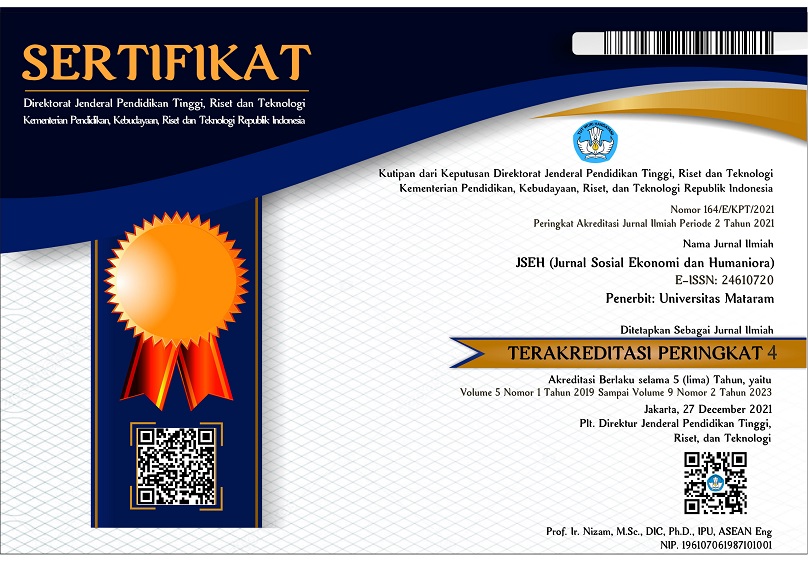Analisis Perceived Risk Dan Trust Terhadap Keputusan Penggunaan Quick Response Indonesia Standar (QRIS)
DOI:
https://doi.org/10.29303/jseh.v10i4.716Keywords:
QRIS, Perceived Risk, TrustAbstract
The development and increasing penetration of the internet have driven significant changes in Indonesia's business landscape, particularly in digital payment patterns. One innovation in digital payment systems is the Quick Response Indonesia Standard (QRIS), which standardizes non-cash payments using QR Codes. This study aims to examine the influence of Perceived Risk and Trust on the decision to use QRIS in Mataram City. This associative study targets residents of Mataram City who use QRIS as a non-cash payment method. A total of 100 respondents were selected through purposive sampling. Data collection techniques included interviews, questionnaires, and documentation, while data analysis employed multiple linear regression. The results indicate that both Perceived Risk and Trust have a positive and significant influence on the decision to use QRIS. These findings provide insights for Bank Indonesia to expand QRIS networks, minimize risks, and enhance public trust in QRIS as an efficient digital payment solution.
References
Ardiansyah, P. 2007. Etika Bisnis. Yogyakarta : Quadrant.
Chawla, D., & Joshi, H. 2019. Consumer Attidute and Intention to Adopt Mobile Walletin India- An Empirical Study. International Journal of Bank Marketing.
Ghozali, Imam . 2012. Aplikasi Analisis Multi Variate dengan Program IBM SPSS19. Semarang : Badan Penerbit Universitas Diponegoro.
Jogiyanto, Hm. 2007. Sistem Informasi Keperilakuan . Yogjakarta : Andi.
Kadir, Abdul. 2003. Pengendalian Sistem Informasi Keperilakuan . Yogjakarta : Andi.
Nasution. 2004. Perceived of Use, Sistem Informasi Manajemen . Sanjaya.
Santoso, B. 2014. Pengaruh perceived Usefulness, Perceived Ease of Use dan Perceived Enjoyment Terhadap Penerimaan Teknologi Informasi ( Studi Empiris di Kabupaten Sragen).
Setiawan, F.R.2020. Analysis of Factors Affecting the Interes of People to Use DANA Aplication Using Principal Component Analysis Method (PCA). International Research Journal of Advanced Engineering and Science.
Sugiyono. 2018. Metode Penelitian Kuantitatif, Kualitatif dan R&D. Bandung : Alfabeta
Downloads
Published
How to Cite
Issue
Section
License
Copyright (c) 2024 Rusminah HS, Hilmiati Hilmiati, M. Ilhamudin, Sulastri Sulastri

This work is licensed under a Creative Commons Attribution-NonCommercial 4.0 International License.







